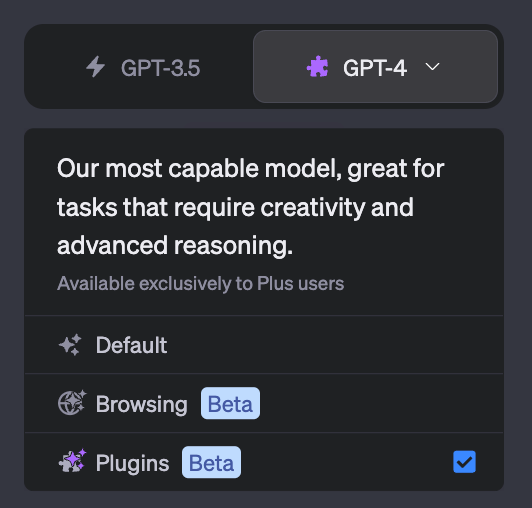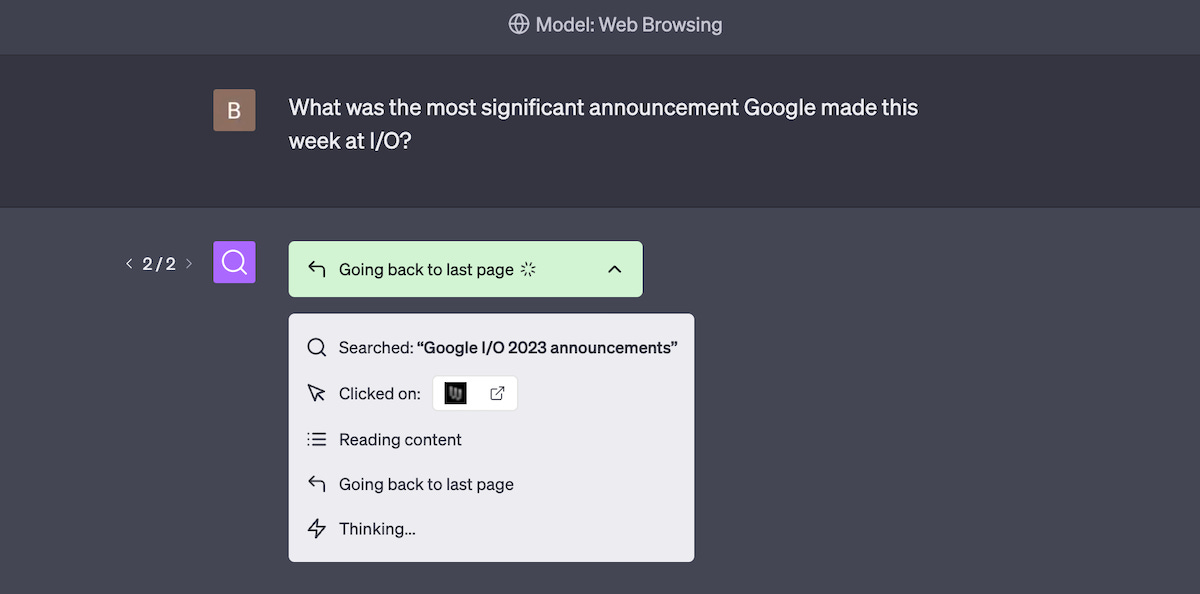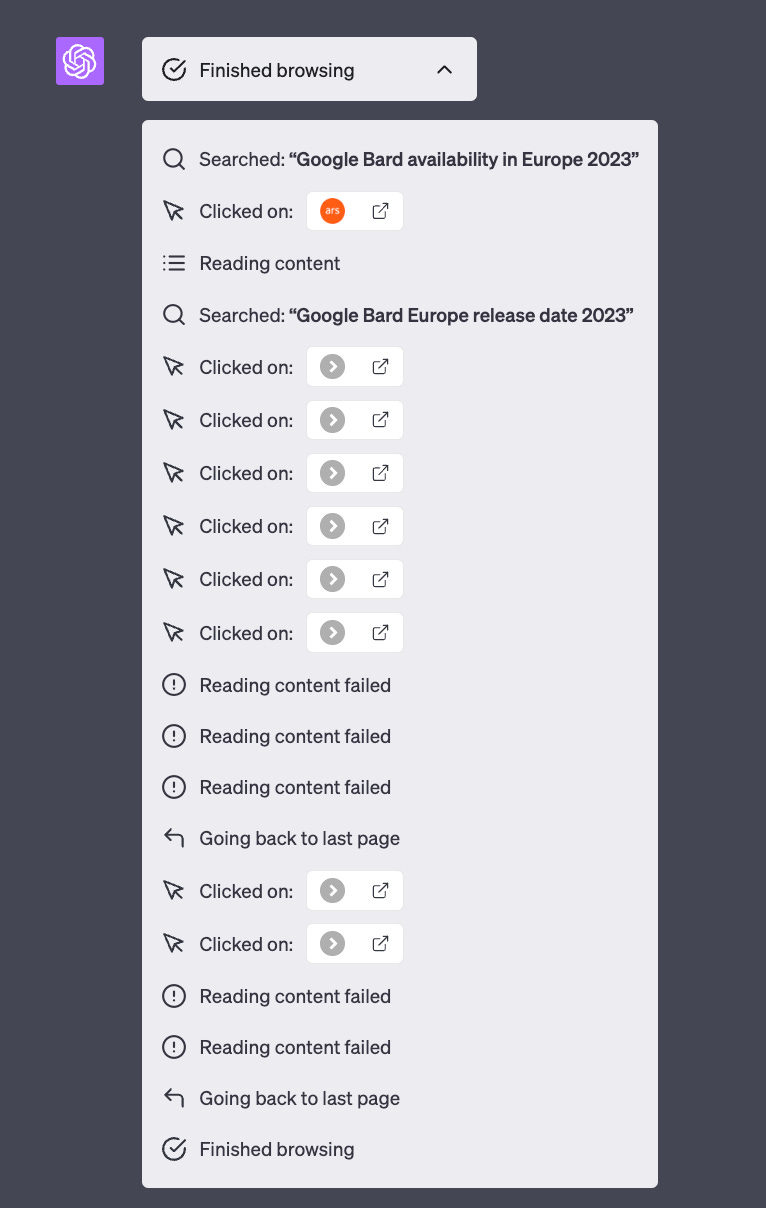ChatGPT Plus Subscribers Can Now Use Plugins and Web Browsing - Here are Some Tips
70 Plugins and the Internet Search Model are Now Active
OpenAI opened access to the new Plugins and Web browsing models yesterday to all ChatGPT Plus subscribers. The official announcement on Twitter and the one from OpenAI CEO Sam Altman both said the features would be rolled out over the next week to all subscribers to the service. However, I am unaware of any subscribers who do not yet have it.
Since Plugins and real-time web browsing are considered beta features, they are unavailable to free ChatGPT users. This may be an incentive for some free users to upgrade to the $20 per month subscription. However, having used Plugins during the early access alpha release and testing the Web browsing model, I don’t see this as a significant incentive today.
How ChatGPT Plugins Work
ChatGPT is a great knowledge engine, but it has limited capabilities in executing tasks. Plugins are the method that OpenAI employs to provide access to web services from third parties and fulfill some of those “doing,” or task execution, needs. Google announced a similar model this week for its ChatGPT rival, Bard, which they call extensions.
There is an extensive write-up about how ChatGPT Plugins work and three video demonstrations in a post from last week which you can read here. If you have not looked at it, I suggest skimming it and watching one or more of the videos showing the Plugins model in action. I have included one of them below. You can find two others in the earlier post.
A few key points about Plugins:
It is a different AI model - When using Plugins, you are not using the core GPT-3.5 or GPT-4 model that runs most of your ChatGPT queries. That means you must select the Plugins model, and your experience will be largely governed by the Plugins that are available.
There are only 70 Plugins available - Your Plugins experience will be limited by the 70 available today. There are a few high-profile brands, such as Zillow, Expedia, Instacart, and Lowe’s. However, most Plugins today are surprisingly independent, new, or little-known brands.
You can only access 3 Plugins at a time - When using Plugins, you must select which you want access to for your query, and there is a limit of three for any one query. This means you may be switching between Plugins and executing multiple clicks if you are a regular user of these services.
You can’t use competing Plugins simultaneously - If two Plugins fulfill the same service, such as Kayak and Expedia demonstrated in the above video, you must choose one. ChatGPT cannot govern conflicts between Plugins today.
Plugins do extend the capabilities of ChatGPT - While the user experience is suboptimal with many clicks and switching between models, the Plugins enable access to capabilities not resident in ChatGPT. This may improve your ChatGPT experience or at least make it more versatile. With that said, opening a new tab on your browser and going directly to a company’s website will be a better experience.
The Plugin providers limit ChatGPT’s Plugin experience - My earlier testing of Plugins shows that most of the Plugin makers are actually providing very rudimentary responses back to ChatGPT. Much of this is limited by what these services provide back to ChatGPT. They are not using the ChatGPT context to the fullest extent but instead bias toward simple API calls.
How ChatGPT Web Browsing Works
Web browsing is yet another model you must select if you want real-time access to the internet. I found this service to be worthy of the beta label. Two queries never produced a result for news that happened this week despite contacting a website with this news and thinking endlessly about it.
After you enter your query, click the button with the down arrow. That will show you what is happening, including providing links to web pages the model is consulting to answer your query. Those links, by the way, are a way to see sources. You may also see a small green number as a source in the response if you want to verify the information provided. If the engine shows it is thinking for more than a minute, you are probably not getting a response and should start over.
Several other queries did work well, and sometimes it actually consults many sources as you can see in the image above. However, the responses were significantly slower than what you receive from Bing Chat or Perplexity.ai and of no higher quality. My initial assessment is that this feature works, but you will be better served using one of the conversational search engines for the time being.
ChatGPT’s Second Act is Immature
ChatGPT was a phenomenon when it first arrived. The user experience was good. It exceeded expectations. It provided value you could not find elsewhere. Some of those factors remain as ChatGPT with GPT-4 provides very high quality responses for a number of use cases.
However, Plugins and Browsing are not better than alternative solutions today. It is a beta period, so we should expect the product to improve over time. The user experience provides a technically feasible approach to adding value to ChatGPT, but is not well thought out or close to delightful as a user experience.
Let me know what you think in the comments. It is fun to play with, and I will review a few of the new Plugins over the next week. Don’t expect to be “blown away” or capture the enthusiasm that OpenAI President Greg Brockman alluded to in his Ted Talk two weeks ago. The promise of those “jaw-dropping” features is not yet reality.
20 Google Bard Announcements. How to Access it Today in 180 [non-EU] Countries.
Bard was a featured product today at the Google I/O annual developer conference. The ChatGPT competitor has been in a closed preview since February. As of today, it is available in three languages and 180 countries. Notably, EU member nations are excluded from access. No explanation was given, but the reasoning seems obvious if you have been following g…







![20 Google Bard Announcements. How to Access it Today in 180 [non-EU] Countries.](https://substackcdn.com/image/fetch/$s_!7AEX!,w_1300,h_650,c_fill,f_auto,q_auto:good,fl_progressive:steep,g_auto/https%3A%2F%2Fsubstack-post-media.s3.amazonaws.com%2Fpublic%2Fimages%2F35c44002-d4d0-41a6-b216-bfca79435b57_1200x721.jpeg)
![ChatGPT Plugins Alpha - Conversational Commerce, Images and UX Issues [VIDEOS]](https://substackcdn.com/image/youtube/w_728,c_limit/6wDuaEDDZck)